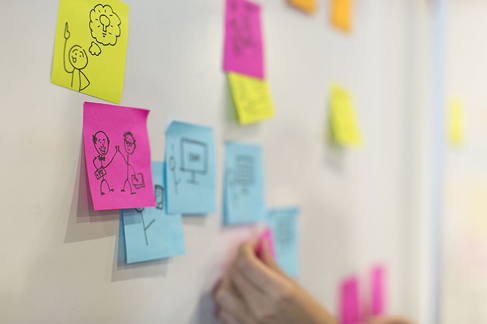[ 2 ]
Why We Prototype
There are many great reasons to make prototypes and to include them early and often in your process, and the four main points I’ll cover are as follows: to understand, to communicate, to test and improve, and to advocate. Each of these is similar, but has a unique twist to why prototypes are valuable and why you should include them at different parts of your design process.
To Understand
Prototyping is a great way to not only understand the problem you’re currently trying to solve, but to illuminate alternative problems you should solve instead. This process is called problem discovery, and it can help you find the root cause of your user’s pain, which might be different than your originally assumed user problem. It’s helpful to do problem discovery, through exploratory research and prototyping, early in your process because the further along you are in development, the more difficult and expensive (in time and money) it will be to change directions (Figure 2-1). You will find it easier to pivot as early as you can so that you’re on the right track for the product.

Figure 2-1
Problem discovery and exploratory research can help define the direction of your project
For example, Segway saw an opportunity area between pedestrian walking and car driving, but didn’t spend adequate time researching and validating their problem space (Figure 2-2). They decided ...
Get Prototyping for Designers now with the O’Reilly learning platform.
O’Reilly members experience books, live events, courses curated by job role, and more from O’Reilly and nearly 200 top publishers.

